Distributed Collections - More than the Sum of their Parts
, 8 November 2013
This is ‘Part 2’ of my thoughts on distributed collections, the first one having appeared on this blog in May 2013. There is a drive to create a Distributed National Collection in Wales as part of a move towards joined-up content in museums, which is essential to provide both public and professional access to collection information and specimens alike. The Welsh Museums Federation is at the forefront of this development, with the main aim of the Linking Natural Science Collections in Wales being to implement the Welsh Museums Strategy’s concept of a Distributed National Collection for natural science collections.
If collections are dispersed, access to data and specimens can be difficult; there may not be much information about a collection, or access may be restricted because of lack of staff, or stores may be physically inaccessible – if you have anything to do with museums you will have been in a crowded store where you can’t swing a (mounted) cat for the number of boxes and things triple-stacked on top of each other. There are many reasons why collections may be dispersed and I would like to explore some of these reasons here.
Dispersal within a single museum
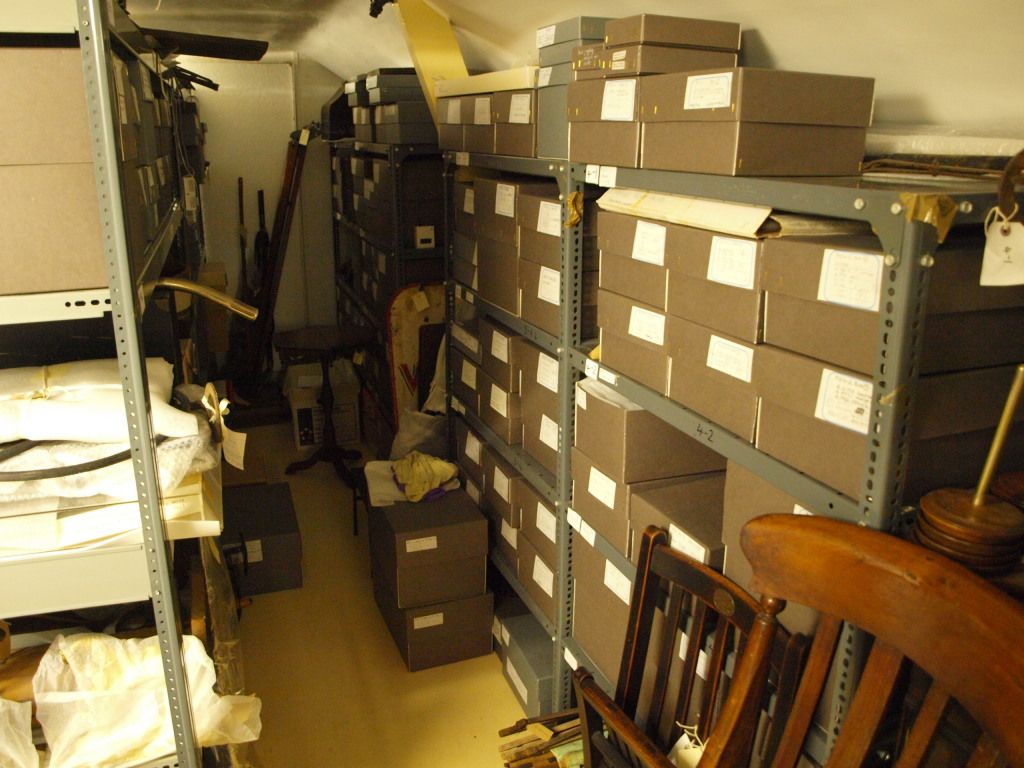
In many cases, particularly in museums with a social history focus, inaccessibility of natural science material can arise from the way the collection is classified and, accordingly, organised in the stores. Museums with dedicated natural science collections keep all vertebrates together, all fossils in one place and all insects in the same cupboard. However, if your focus is on collecting local social history objects your collections management system will be designed to help you classify dresses, wooden spoons and Victorian drill bits. Any natural science specimens will then be slotted into that classification system with the result that, for instance, some mounted objects and taxidermy are stored in the ‘Hunting’ section while others can be kept under ‘Domestic’. As a result, specimens which under one classification system (natural science) share common characteristics are physically dispersed throughout a store because under a different classification system (social history) the emphasis is on different features.
Dispersal within a regional area
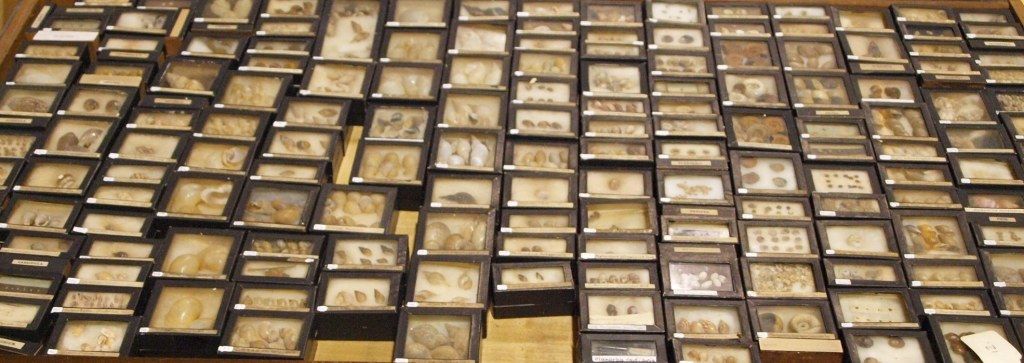
Historically, many collections with local relevance ended up in local museums. This is why so many museums have a couple of stuffed barn owls and a box full of cow bones – seemingly unnecessary duplication. This may be a reflection of the relatively similar collecting interests of people – have you been able to resist the temptation of picking up some old cow bones when you saw them scattered in a field? And once you have them in your possession, what better to do with them than donate them generously to your local museum as an example of the local biodiversity?
Local museums are, of course, also fantastic repositories for local biodiversity and geology. However, there is rarely a collections strategy which would ensure systematic sampling of the entire local flora and fauna. As a result, the extent to which the local area is actually represented in the museum collection depends on a number of things (enough material for another article), essentially chance. This means that, theoretically and statistically, the combined collections of many museums in a geographical area may be a fairly good representation of the natural history and geology of this area. Is this really the case? While creating a Distributed National Collection in Wales we will soon find out.
Deliberate Dispersal
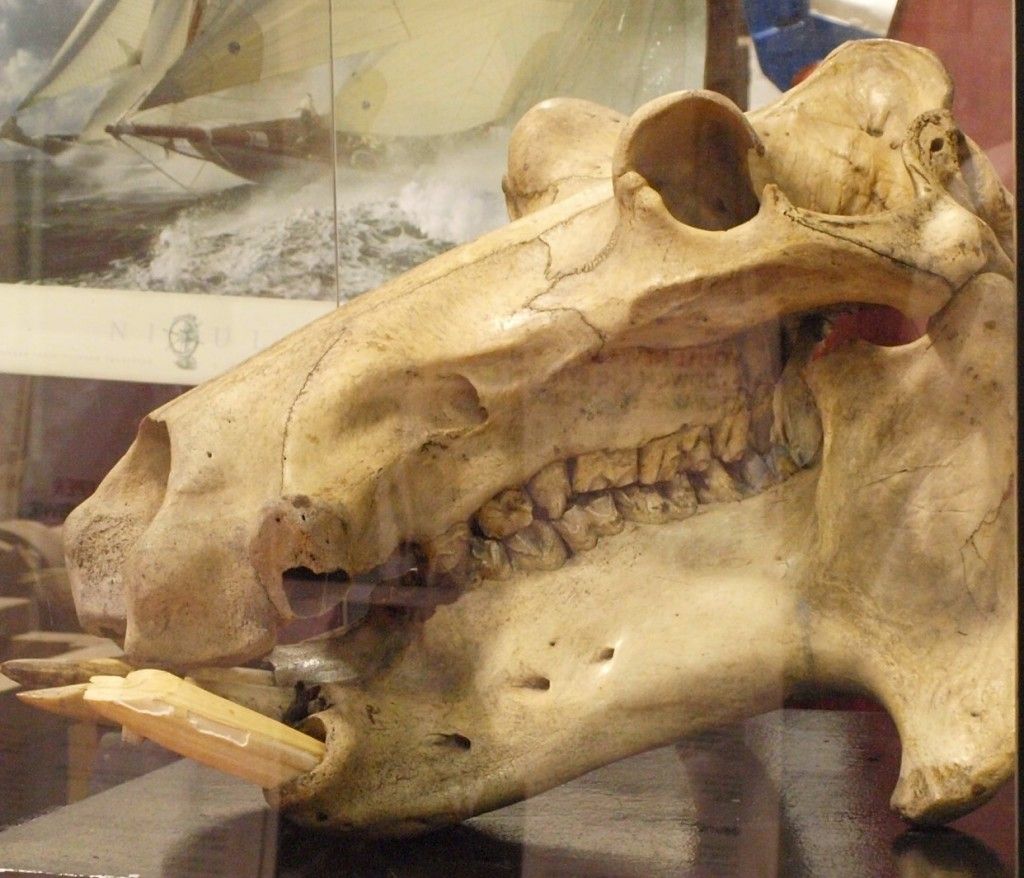
Collections may be dispersed for other reasons, for instance entirely deliberately. The artist Marged Pendrell has her own take on dispersed collections of natural science material. Over a number of years she had collected a large number of skulls from North Wales. A recent move to a smaller studio prompted her to disperse part of her collection by offering sheep, fox and badger skulls – as being representative of her local environment in Snowdonia – to interested takers. Marged compiled photographs of the skulls in their new residences into a book (Dispersed Collection – Skulls). In that sense, while the collection was broken up physically, it still exists as a concept, with information about the specimens preserved and accessible.
Strategic Dispersal
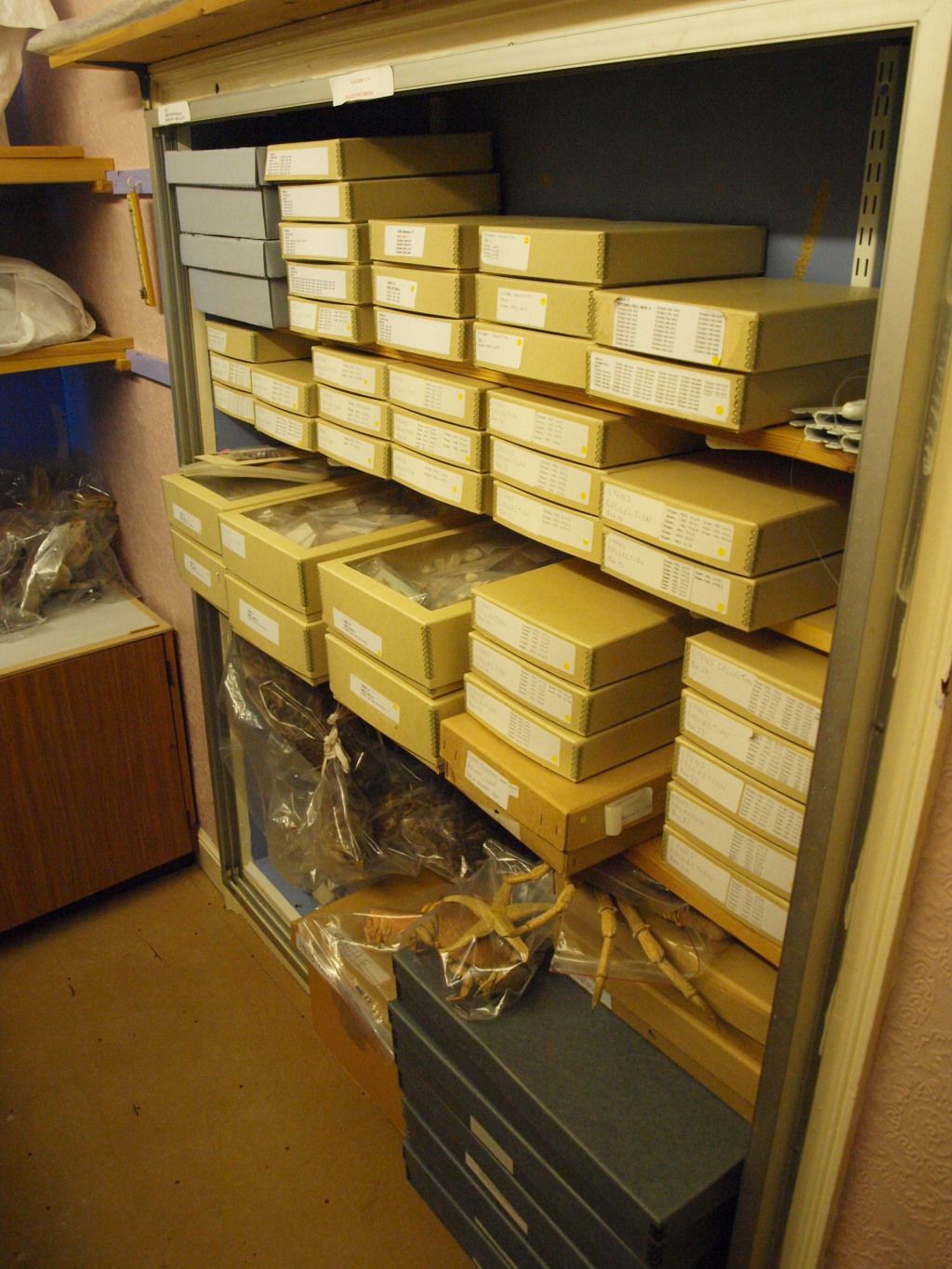
Every museum with natural science collections has a near identical remit – to inform the public about biodiversity and natural history – and as a consequence every such museum has much the same material (although the extent and diversity varies with the size of the collection). There are numerous duplicate mounted foxes, mammoth teeth and trilobites of the genus Calymene in collections across the UK (and Europe). However, even before the recent haemorrhaging of specialists from museums only a small number of collections employed expert curators who would have detailed knowledge of very specific parts of collections. Therefore, many museums hold collections that are not publicly available, not even publicised. This is no fault of the curators – every museum has overlooked areas of collections which are low priority for that specific museum but which may be internationally important.
As a way around this dilemma Mark Carnall from the Grant Museum of Zoology has suggested – as a thought experiment – to reorganise collections taxonomically (scroll down to page 65). Instead of storing specimens from every taxonomic group, storage space would be used instead to house only specific taxonomic groups, i.e. all the nation’s badgers would end up in in museum A, all the dandelions in museum B, the fossil corals in museum C – you get the picture. Arguably, an impossible task, as the logistics and resources involved in achieving this would be phenomenal. However, there would be a number of advantages to such a system, mainly in terms of efficiency, specialist knowledge of each collection, access and research.
National Dispersal - the case of Wales
Natural science collections exist in more than 100 institutions in Wales. The majority of specimens are kept at the National Museum in Cardiff, but records of the natural history and gegology of Wales are, in essence, distributed across many different collections. Combined, these collections give a pretty good picture of Wales' natural environment (albeit one which may be distorted by historic events and the personal interests of individual collectors and curators). At present, however, it is difficult to access these collections as even local curators often do not have sufficient knowledge about their holdings.
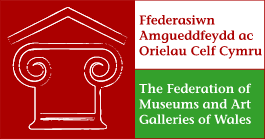
The Welsh Museums Federation’s Linking Natural Science Collections in Wales project is aiming to improve this situation. It does not suggest changes of location or ownership of collections, but envisions much improved access to basic collection information for museum users. Collections reviews to establish a base line of collections knowledge are now under way, and a website will be the public access point to this information. In addition, a major touring exhibition of the treasures of Welsh natural science will showcase our wonderful collections and will be a powerful way of bringing them into greater prominence, offering the public a change to engage directly with our distributed national collection. Welsh natural science collections, wherever they may be stored, will be accessible to any potential user.